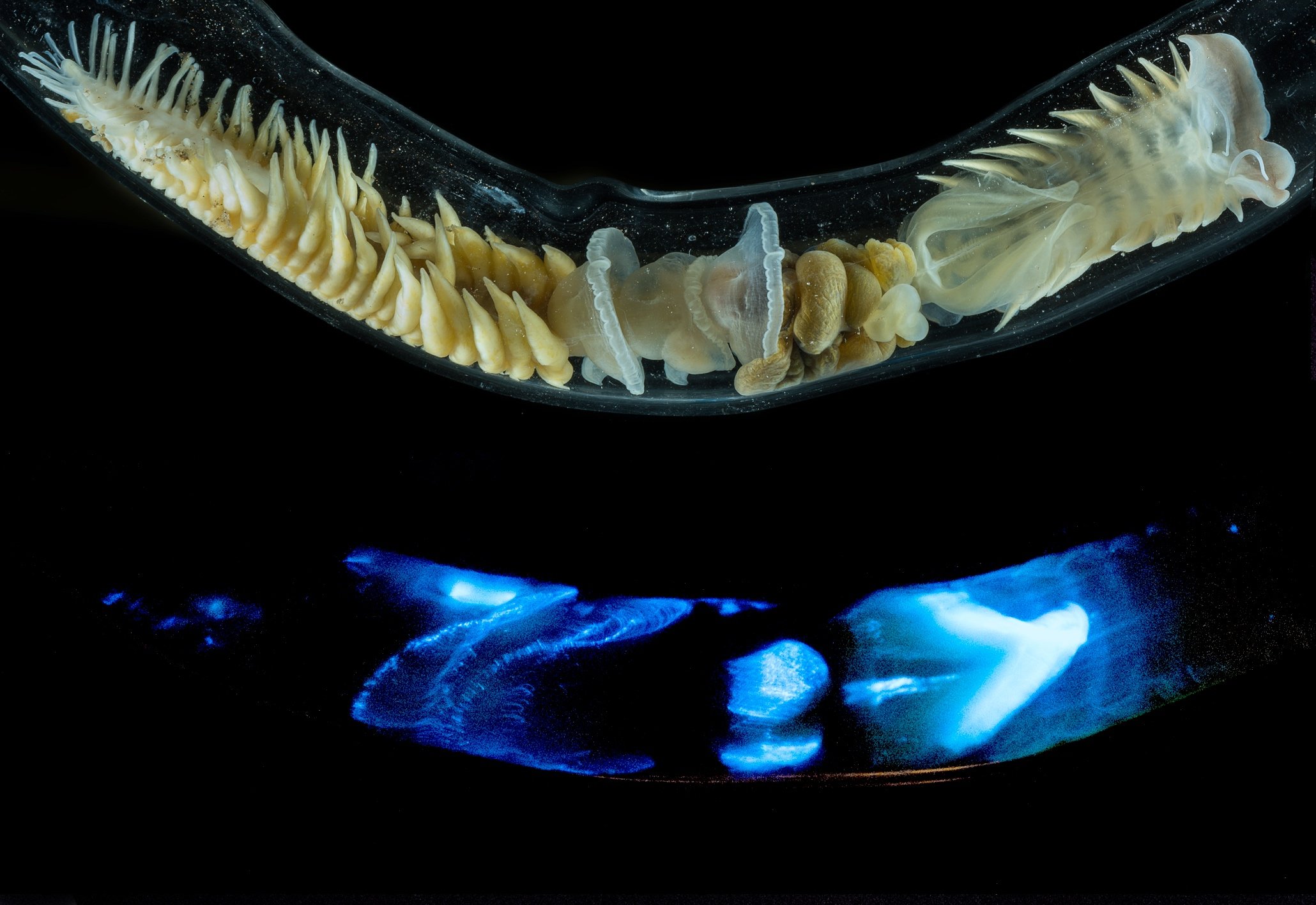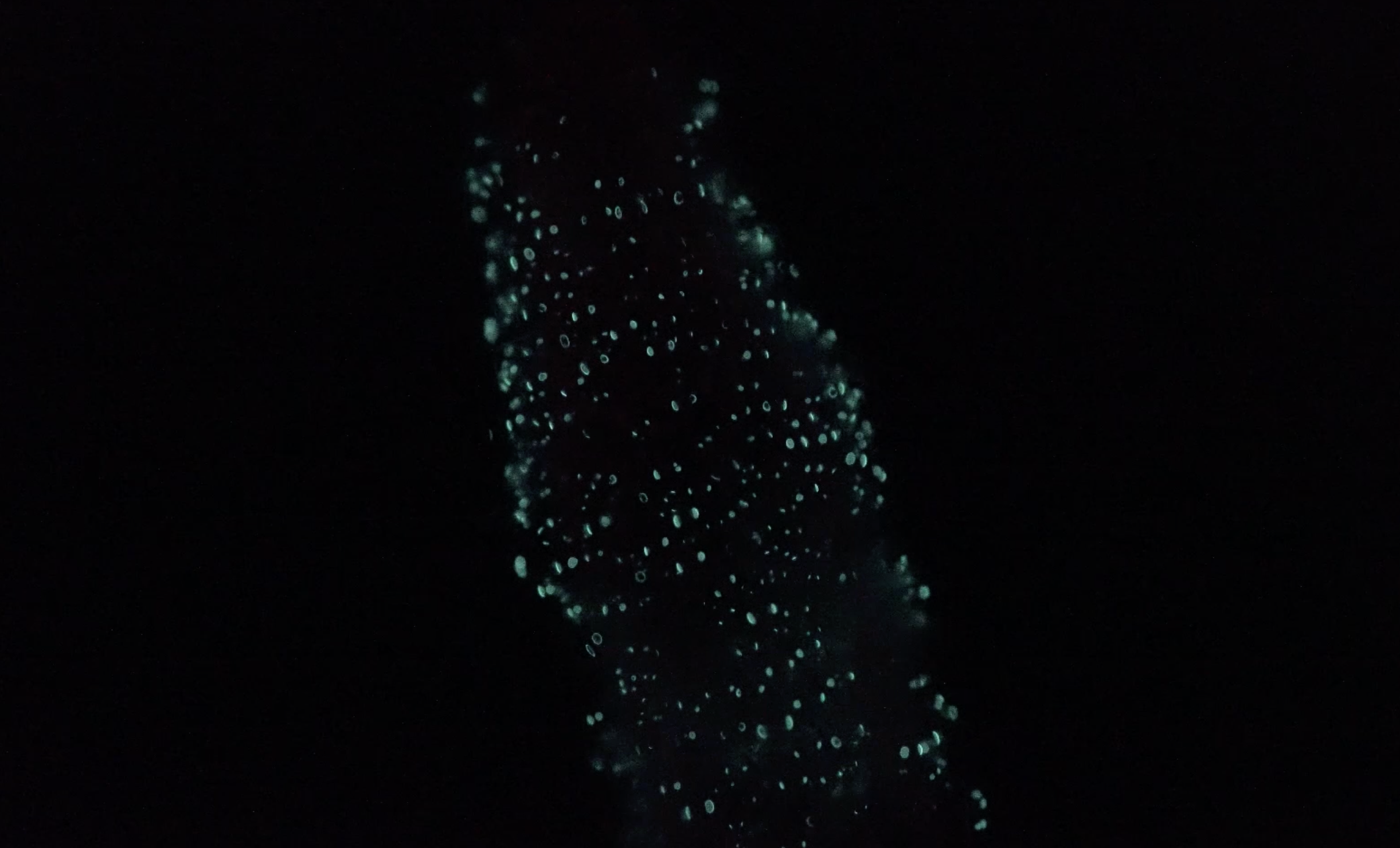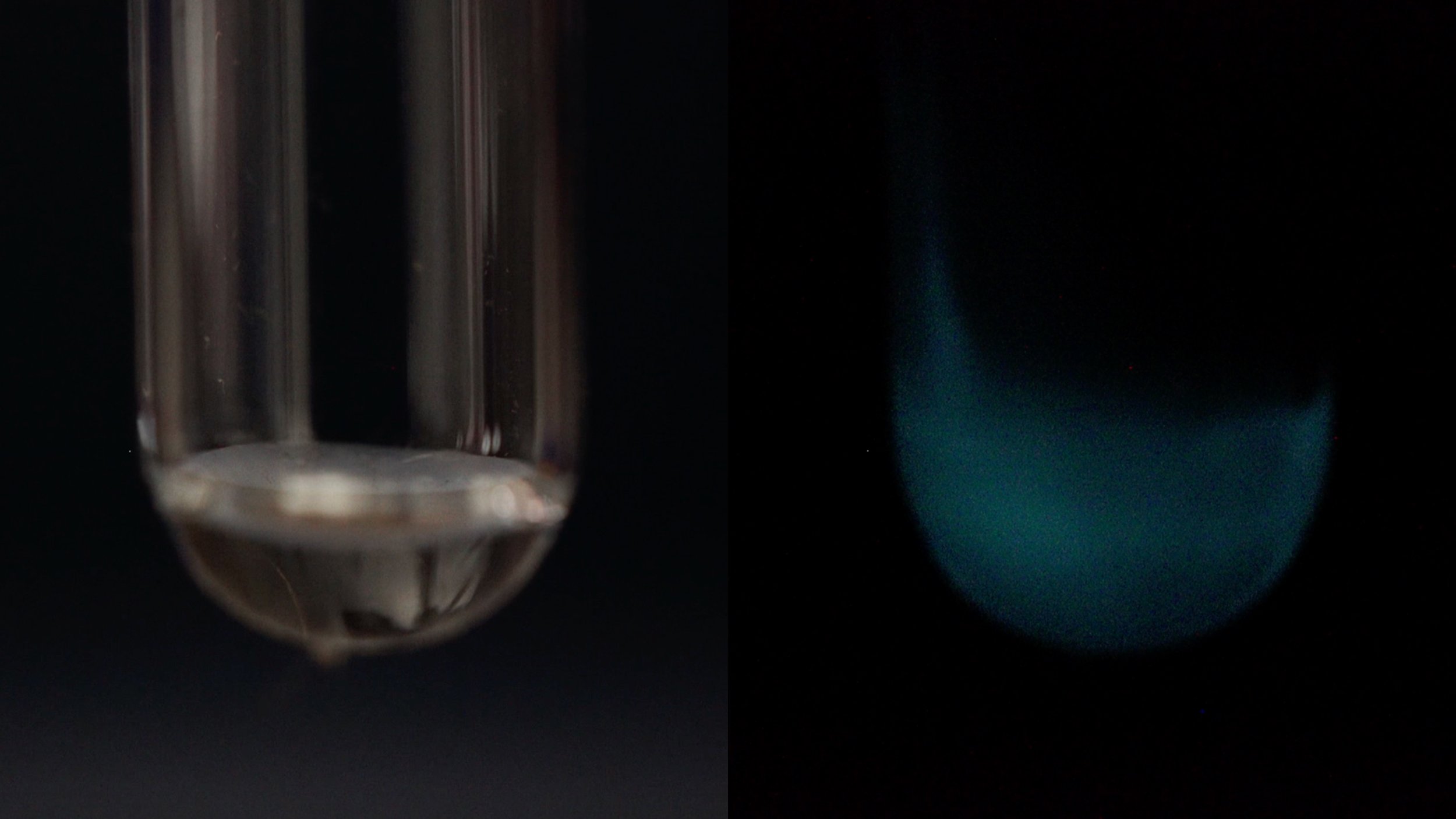Exploring bioluminescent marine systems
New photoproteins and luciferases
Oliveira lab focuses on the molecular understanding of the light emission process by bioluminescent reactions and its use in biotechnological applications. Through a variety of methods of biochemistry and molecular biology, such as LC-MS, NMR, cryo-EM, molecular cloning, and RNA-sequencing, we isolate and characterize new luciferases and photoproteins from luminous marine organisms.



Engineering bioluminescent proteins
Wild-type luciferases and photoproteins can experience limitations in terms of stability and light emission activity depending on the assaying conditions. We use genetic engineering to enhance the properties of new isolated luciferases and photoproteins, such as detection limits, thermostability, and modulation of spectral emission, creating more efficient luminescent proteins for a range of non-invasive studies and applications.


